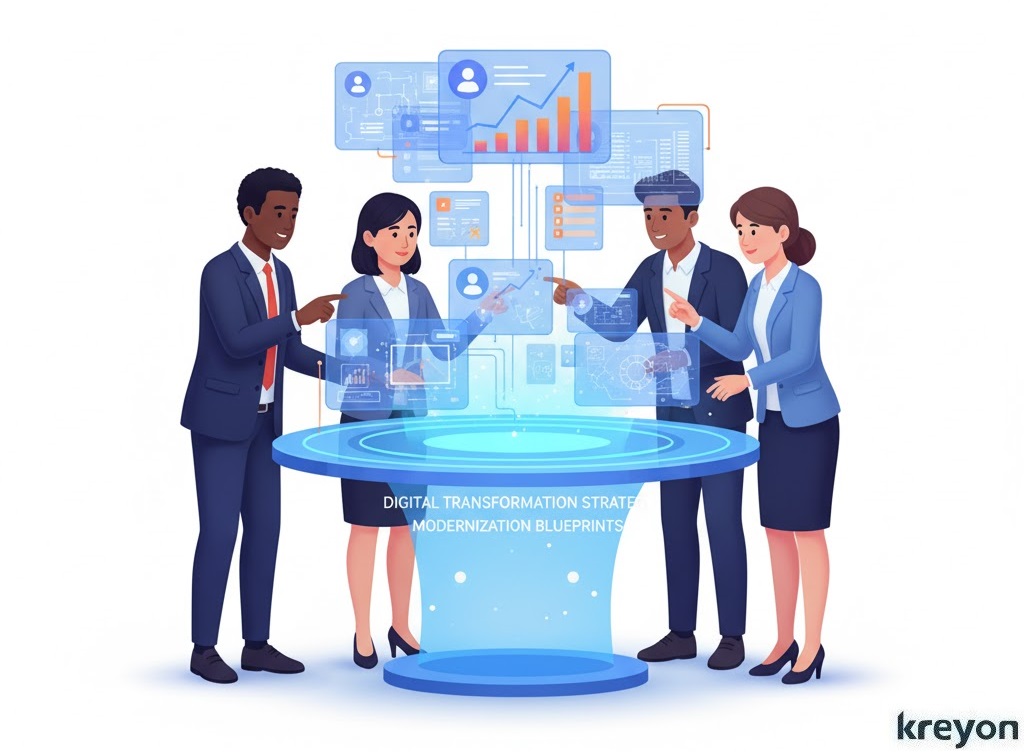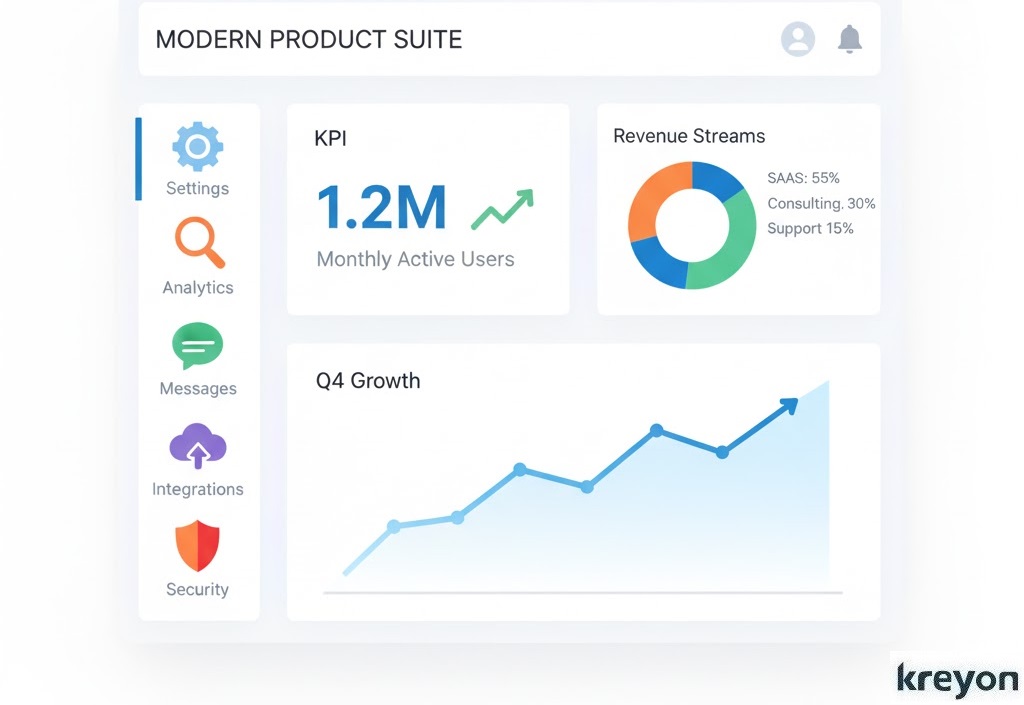Product Modernization Lessons from Industry Leaders: How Top Companies Future-Proof Their Technology

In today’s business world, standing still is the fastest way to fall behind. When companies talk about product modernization, they’re not just upgrading software or swapping old systems for new ones.
They’re rethinking how they deliver value, how they connect with customers, and how they stay ahead of change. In this piece, we’ll explore what product modernization really means and what the most forward-thinking companies are doing to future-proof their technology and their growth.
What Is Product Modernization and Why It Matters
Before we dive into examples, let’s get clear on what product modernization actually involves. At its heart, it’s about updating, transforming, or replacing products and the technologies behind them so they’re ready for tomorrow’s business models, customer demands, and tech trends.
It’s not just about “updating a feature.” It’s about building products that are resilient, adaptable, and built to compete in a world that never stops evolving.
Why is this so critical? Because:
-
Legacy systems slow everything down. They create technical debt, block innovation, and make it harder to stay agile.
-
Technology is changing faster than ever. Cloud computing, AI, and digital ecosystems are reshaping entire industries.
-
Customers expect more. Faster updates, seamless experiences, and products that integrate with everything else they use.
In short: modernization isn’t optional anymore, it’s a survival and growth strategy.
Benchmarking Your Product Modernization Strategy
Every successful modernization effort starts with one thing: strategic clarity. Industry leaders don’t just “lift and shift” old tech. They make sure every modernization move is tied directly to business goals, customer value, and a vision for the future.
Align Modernization with Business Capabilities
Smart organizations see their products as business capabilities—not just pieces of software. That means identifying which business outcomes depend on each system, then prioritizing modernization based on impact.
Build Governance and Get Executive Buy-In
A common reason modernization stalls? No executive ownership. The best companies treat modernization as a board-level priority, complete with defined roles, responsibilities, and measurable KPIs to keep momentum and accountability high.
Prioritize with Purpose
You can’t modernize everything at once. Top performers start by assessing which products or systems deliver the most business value or the most risk and modernize those first. Early wins build momentum and justify further investment.
Architecting for Product Modernization

Once the strategy is set, the real magic happens in architecture—the foundation that allows flexibility, scalability, and continuous improvement.
Embrace Microservices, APIs, and Cloud-Native Design
The move away from rigid, monolithic systems toward cloud-native, microservices-based, API-first architectures is well underway.
This approach lets companies deploy updates faster, integrate new tools easily, and evolve without breaking everything in the process.
APIs act like translators between old and new systems, allowing gradual, low-risk modernization instead of massive, all-at-once overhauls.
Hybrid Cloud and Modular Platforms
Not everything belongs in the cloud, and that’s okay. Many companies build hybrid platforms, part cloud, part on-premises, so they can balance flexibility with control.
The key is modularity: being able to upgrade one piece at a time without taking the entire system offline.
Decouple Product and Operations
In industries like manufacturing, modernization goes beyond software. The factory itself is becoming a product—smart, connected, and continuously updated.
This shift means designing products (and production systems) for ongoing evolution, real-time feedback, and data-driven decision-making.
Turning Strategy into Action: Executing and Scaling Modernization

A great plan is useless without great execution. Here’s how leading companies bring modernization to life—and scale it across their organizations.
Take It Step by Step
Big-bang transformations sound exciting but often lead to chaos. Successful companies modernize in phases—extending, refactoring, or rebuilding systems gradually. This phased approach reduces disruption and builds trust across teams.
Invest in People, Not Just Platforms
Technology can only take you so far. Real modernization happens when people have the skills and mindset to drive it. Companies leading this charge are investing in upskilling cloud, DevOps, microservices and fostering cultures of experimentation and learning.
Measure What Matters
It’s easy to track the number of systems updated or lines of code rewritten. But the real metrics of success are time-to-market, customer satisfaction, flexibility, and cost savings. Dashboards help but disciplined governance and meaningful KPIs keep efforts aligned with business outcomes.
Lessons from Industry Leaders

Let’s look at a few common threads among companies that are winning at product modernization.
1. Modernization Is a Business Strategy, Not an IT Project
The best organizations make modernization a core business initiative. They tie it directly to growth, innovation, and long-term competitiveness—not just system upgrades.
2. Build for Modularity and Change
In a world where change is constant, rigid products are liabilities. Leading companies design modular, composable architectures so components can evolve independently. Flexibility is the ultimate insurance policy.
3. Win Small, Scale Big
Start with projects that deliver clear value quickly. Early success stories inspire confidence and attract more investment. Think of modernization as a snowball that gains momentum as it rolls.
4. Design for Continuous Evolution
Modernization doesn’t end when the migration is done. The goal is to create systems that keep evolving—where architecture, culture, and governance all support ongoing updates and improvement.
5. Measure Business Impact, Not Technical Progress
Forget vanity metrics. The real measure of success is how modernization improves the business—faster launches, happier customers, and lower costs.
Common Pitfalls to Avoid
Even the best strategies can go sideways. Here are five traps to steer clear of:
-
Treating modernization as an IT project only. Involve business leaders from the start.
-
Going for a big-bang overhaul. Phased modernization is safer and more effective.
-
Skipping governance. Without ownership and clear KPIs, projects drift.
-
Neglecting people and culture. Tools don’t modernize organizations—people do.
-
Losing sight of the customer. Modernization should always lead to better experiences and more value for users.
Wrapping It Up: Modernize to Thrive
Product modernization isn’t a trend—it’s a transformation. The companies thriving in today’s market share one thing in common: they treat modernization as a continuous journey that touches every part of the business.
As you reflect on your own organization, ask yourself:
-
Are we aligning modernization with our business goals?
-
Do we have the right architecture and culture in place?
-
Are we measuring impact in business terms, not just tech terms?
If your answers are uncertain, now’s the perfect time to start.
With Kreyon Systems, you can modernize smarter, innovate faster and build the kind of future-ready products that keep your company not just in the race, but in the lead. For queries, please contact us.
